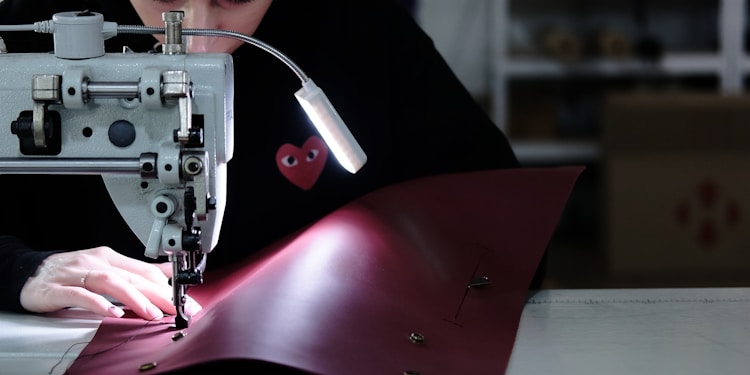There’s a chance that you learned sewing when you were young—most probably at school or by your parents. Today, most schools don’t teach sewing. The result of this has been that most people grow into adulthood without knowing how to sew. However, this doesn’t mean that you cannot learn the craft, regardless of your age. If you are learning how to sew on your own, it’s important to know that this has benefits and drawbacks.
The pros of sewing clothes on your on
Give you a sense of achievement
There’s nothing more satisfying than knowing that you are wearing a cloth that you made for yourself. Yes, nothing can beat that sense of achievement, especially when your friends compliment you for looking good on an outfit that you sew from yourself.
It helps to relieve stress
Family, friends, traffic, and work can stress us to some extent—regardless of how much we love them. Thus, finding an activity that you love doing and can help relieve that stress is important—otherwise, you might end with health problems after some time.
Because sewing has a feeling of relaxation, and it’s something you can do at your own pace, you can easily forget everything else you are struggling with for some time. This makes it one of the best activities to calm you down and relieve your stress. Most people consider sewing to be a therapy, which can be very effective.
Can improve your hand-eye coordination
Hand-eye coordination is the ability to precisely use your hands and follow that path with your eyes. Without this skill, it can be hard to do a simple activity like throwing or catching a ball properly, cooking, writing, or drawing, among other daily activities.
Sewing is a skill that requires precise movements of hands and lots of line tracing. So, DIY sewing can help to develop or improve your hand-eye coordination. When sewing, you will need to assemble or trace patterns, cut them, move the fabric pieces to the right places, and join them with a sewing machine.
The exciting thing is, you are exercising this ability subconsciously—without even noticing it. That means you will not get bored when trying to perfect the ability.
It helps to improve focus
Sewing requires a lot of concentration. Otherwise, you can accidentally tear the fabric, break the needle, or stitch your fingers. The thing is, there is a lot that can happen if you are not keen when sewing. And, just like the hand-eye coordination ability, this is something that comes naturally. Thus, you don’t notice how the skill is growing when sewing.
This is such an interesting thing since you are improving without struggling or much thought, which means you will continue utilizing the skill without thinking of it.
You learn to be patient
You cannot sew a full dress within half an hour—even if you are a pro. And, even if it’s something you can do, it can be a total disaster. However, this statement doesn’t mean you cannot do it at all. You need to note that every sewing project takes time—from searching for the right pattern like the clothing patterns by Fayma and fabric, cutting the fabric, and the actual sewing. This is the same with most of our daily activities.
Sewing on your own helps you learn how to be patient and wait for activities that require a lot of patience. Yes, you can still rush things—however, you must be ready to pay the price. Your final outfit will lack certain aspects, and it won’t turn out as you expected. So, once you learn how to be patient as sew, you will be patient with other daily activities of your life.
The cons of sewing clothes on your own
DIY sewing also comes with some drawbacks, which include:
High costs of production
In case you make any mistake—like making a wrong cut or making a garment with shorter sleeves than expected, all that effort and work might turn out to be for nothing. In addition, you will have wasted that fabric that you spent a lot of time choosing. Also, it can be a challenge to advertise clothes that you’ve sewn on your own. In that case, you can end up facing a serious financial loss, in addition to the lack of clothing that you expected to have after the project.
You might not achieve the desired results
Like painting, the picture in your mind might not translate to the final results—and this can be a result of doing things in a rush or the lack of necessary skills. At times, the initial design of the garment doesn’t need to equal the results. So, if you sew at short notice, there’s a chance that the garment you expect doesn’t fit as well as you imagined. Such incidents can lead to unwanted stress and hostility towards any further attempts of sewing.
Bottom Line
There you go. These are the pros and cons of sewing clothes on your own. However, don’t let the cons outweigh the pros, especially if you are a beginner. All you need to understand is that sewing takes some time before you become a pro. Also, any sewing project requires lots of preparation. So, you must be willing to sacrifice a lot of time when preparing for a sewing project if you want to avoid the drawbacks that we’ve highlighted.











